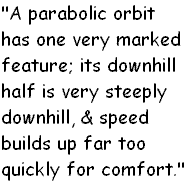Hal Clement's "Sunspot" (novelette, hard sf): How about taking a trip to the Sun?

At some level, at least parts of this story can be contrasted against the novel "Mission of Gravity". Novel involved dealing with a planet with supermassive gravity; this story has not insubstantial parts dealing with super-low gravity of a heavenly body where "a mass of two hundred fifty pounds weighed something like a quarter of an ounce".
This is the first Clement story I've seen that doesn't have any aliens.
At some level, it's an adventure story. Many problems need to be overcome, some unforeseen & apparently unsurmountable.
Story summary.
An unnamed comet "over two miles in diameter" & containing "over thirty billion tons of ice" is making its closest approach to Sun. Ice it comprises of is mostly water, ammonia, & methane.Human explorers - Commander Welland & may be a dozen scientific crew - have embedded their rocket deep inside this iceberg, & plunged it on its current Sun approach path by fitting rockets into it (using its own frozen material for reaction mass). This will be their home as they cut through Solar corona & approach Sun's photosphere (conceptually, the "surface" of Sun, if there is such a thing) to within "within one hundred fifty thousand miles - less than its own diameter by a healthy factor" at perihelion (closest approach).
There are instruments planted in the cometary surface in ways that keep them working even as the cometary surface boils away as it approaches Sun; also a few tunnels have been cut into the iceberg at strategic locations.
Among the various technical issues discussed are:
- An overview of the physics of cometary tail formation.
- Technical solutions to deal with extremely low gravity on the surface (jump carelessly, & off you go into space!).
- Unforeseen problem of going to cometary surface when very near Sun - to fix instruments. Someone will whip up a shield made up of aluminum "foil, made in two layers a couple of inches apart, the space between them stuffed with pulverized ice from the" surrounding iceberg material.
- Very basic view of a solar flare.
- Special spacesuit constraints for near-Sun work.
- Effects of massive temperature difference on exposed instrument surfaces on side facing the Sun & the one buried in cold iceberg.
- Continuing in the aftermath of a massive magnetic storm that killed much instrumentation.
- Why the hero, "Grumpy" Ries, got frostbite when working outside the ship at perihelion!! "a man spends two hours or so swimming around among sacks of frozen methane, which melts at about a hundred & eighty-five degrees centigrade below zero - that's about two hundred & ninety below Fahrenheit, doctor - & the doctor wants to use burn ointment. Break out the frostbite remedy, will you, please?"
- ...
Quotes.
- "The suits were excellent reflectors, but as a necessary consequence they were very poor radiators. Their temperature climbed more slowly than that of the proverbial black body, but it would climb much higher if given time. There would be perhaps thirty minutes before the suits would be too hot for life".
- "A parabolic orbit has one very marked feature; its downhill half is very steeply downhill, & speed builds up far too quickly for comfort."
- "there is, of course, a school of thought that considers the corona as extending well past the earth's orbit."
- "They were hurtling, at some three hundred ten miles per second, into a region where the spectroscope claimed temperatures above two million degrees to exist, where ions of iron & nickel & calcium wandered about with a dozen & more of their electrons stripped away, & where the electrons themselves formed almost a gas in their own right, albeit a highly tenuous one.
It was that lack of density on which the men were counting. A single ion at a "temperature" of two million degrees means nothing; there isn't a human being alive who hasn't been struck by vast numbers of far more energetic particles. No one expected to pick up any serious amount of heat from the corona itself." - "The comet, of course, was not a black body - and did not retain even the heat which it failed to reflect. The moment a portion of its surface was warmed seriously, that portion evaporated, taking the newly acquired heat energy with it. A new layer, still only a few degrees above absolute zero, was exposed in its turn to the flood of radiation."
- "If they could have seen a sunspot at all, it would have been as blinding as the rest of the photosphere - human eyes couldn't discriminate between the two orders of overload."
- "parabolic velocity at a distance of five hundred eighty thousand miles from Sol's center is just about three hundred thirty miles per second, & that produced noticeable relative motion even against a background a hundred & fifty thousand miles away. Features were disappearing below the solar horizon, sometimes, before Donegan could get around to them."
Fact sheet.
First published: Analog, November 1960.Rating: A
Related: All stories of Hal Clement.

0 comments:
Post a Comment